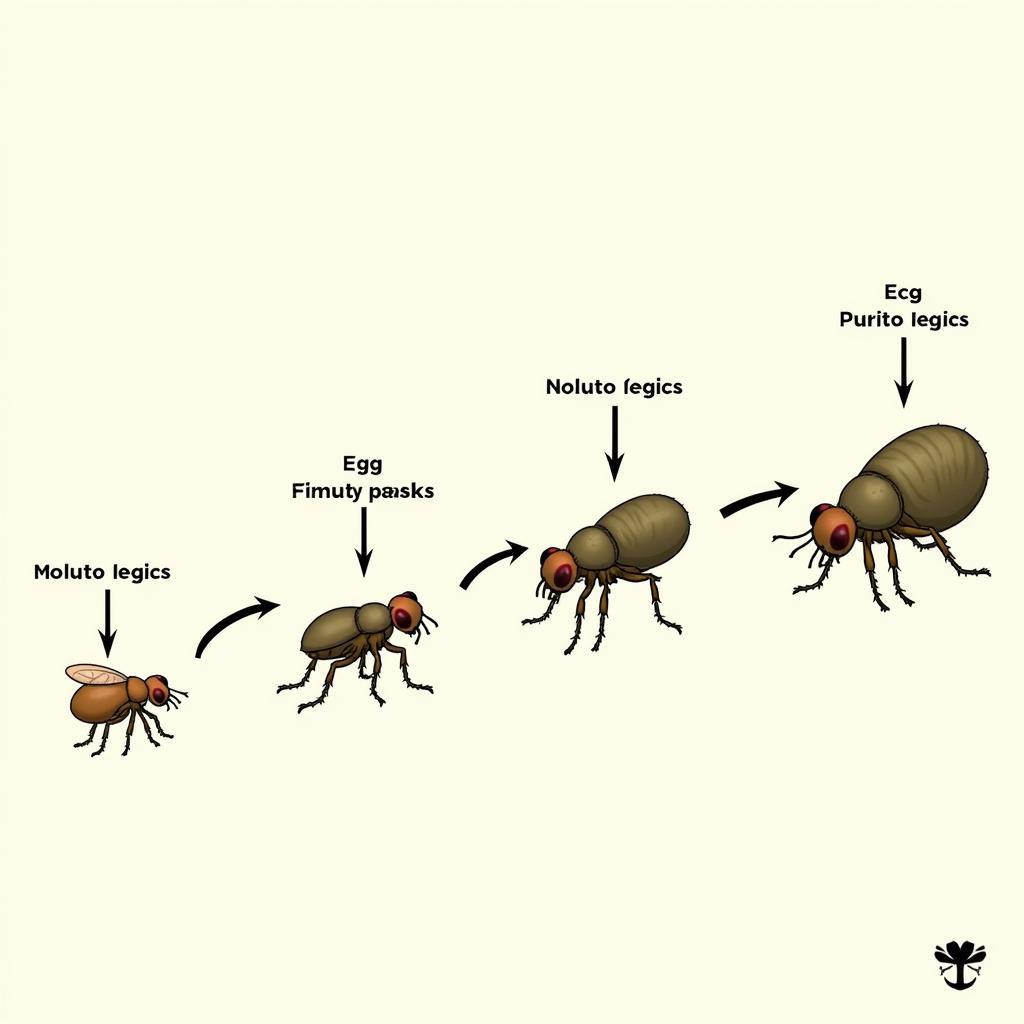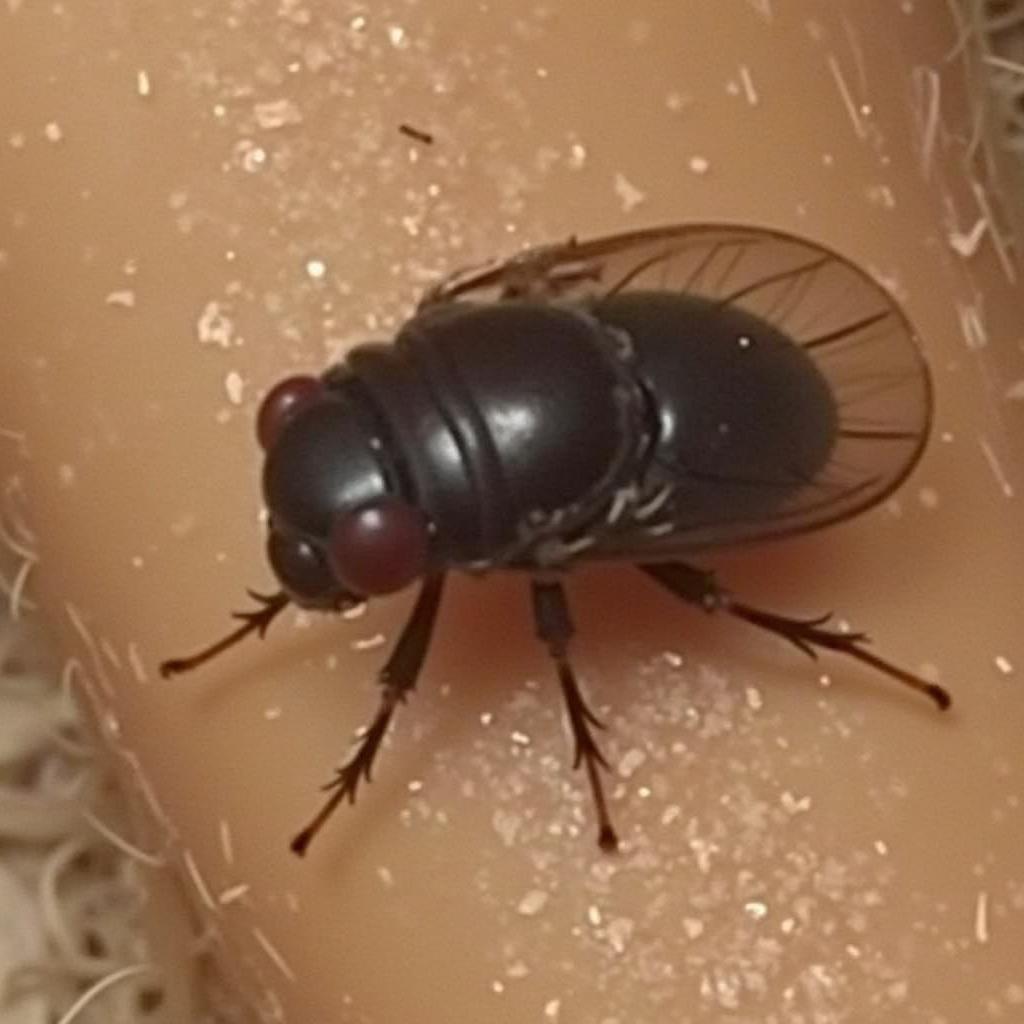Fleas – those tiny, wingless insects that can turn your pet’s life (and yours!) into a nightmare. You know they’re small and jumpy, but have you ever stopped to wonder, “What Color Are Fleas?”
While you might not be reaching for your magnifying glass to get a better look, understanding their coloration can actually be helpful in identifying and dealing with an infestation.
Unmasking the Flea: It’s Not Just Black and White
Contrary to what some might think, fleas aren’t always just black or brown. Their color can actually vary depending on their species, life stage, and even how recently they’ve fed.
Here’s a closer look at the different colors you might encounter:
- Adult Fleas: Most commonly, adult fleas appear in shades of dark reddish-brown to black. This is especially true after they’ve enjoyed a blood meal, with their bodies appearing engorged and darker.
- Young Adult Fleas: Before feeding, newly emerged adults can be lighter in color, ranging from a light brown to almost a tan.
- Flea Larvae: Unlike their adult counterparts, flea larvae are translucent white and worm-like in appearance. They lack the hard exoskeleton of adults and are often found hiding in dark, undisturbed places.
 Flea Life Cycle Stages
Flea Life Cycle Stages
Why Does Flea Color Matter?
While knowing the exact shade of a flea might not seem crucial, understanding their color variations can be helpful for a few reasons:
- Identification: Spotting tiny white larvae on your pet’s bedding or dark brown, jumping adults on their fur can confirm suspicions of a flea infestation.
- Treatment Effectiveness: Monitoring the color of fleas after treatment can provide clues about its effectiveness. If you still notice dark, engorged fleas, it might be time to adjust your approach.
More Than Just Color: Other Identifying Features
While color offers some hints, it’s essential to look at other characteristics to be sure you’re dealing with fleas and not other pests:
- Size and Shape: Fleas are incredibly small, ranging from 1-4 mm in length. Their bodies are laterally compressed, meaning they’re narrow from side to side, which helps them maneuver through fur.
- Jumping Ability: One of the most notorious features of fleas is their powerful hind legs, which allow them to jump incredible distances relative to their size.
- Signs of Infestation: Beyond seeing the fleas themselves, look for signs like excessive scratching, biting, or hair loss in your pet. Black specks (flea dirt) on their skin or bedding are also strong indicators.
 Flea on Animal Fur
Flea on Animal Fur
Don’t Let Fleas Take Over: Prevention and Control
Dealing with a flea infestation can be frustrating, so prevention is key. Here are some measures to keep these pests at bay:
- Regular Pet Treatments: Utilize veterinarian-recommended flea preventatives year-round, even during colder months.
- Home Environment: Frequent vacuuming, especially in areas where your pet spends time, helps remove fleas in various life stages.
- Wash Bedding Regularly: Wash your pet’s bedding, blankets, and any other fabrics they come into contact with in hot water and dry on high heat.
Conclusion
While the question “What color are fleas?” might seem trivial at first, understanding their varied coloration can be surprisingly helpful in identifying and addressing an infestation. Remember, prevention is crucial, so keep your pet protected and your home environment clean to keep these tiny bloodsuckers at bay.
FAQs
Q: Can fleas be white?
A: Yes, flea larvae are translucent white and worm-like in appearance. Adult fleas can also appear lighter in color before feeding.
Q: What do flea eggs look like?
A: Flea eggs are tiny, oval-shaped, and white or off-white. They are often found on your pet’s bedding or in areas where they rest.
Q: I see black specks on my pet. What are they?
A: These black specks are likely flea dirt, which is the digested blood that fleas excrete. It’s a telltale sign of an infestation.
Q: Can humans get fleas?
A: While fleas prefer to feed on animals, they can bite humans, especially if their preferred hosts are unavailable.
Q: I still see fleas after treating my pet. What should I do?
A: It can take time to completely eliminate a flea infestation. Continue using preventatives as directed, maintain a clean home environment, and consult your veterinarian if concerns persist.
Encountering Other Pests?
For more information on other common household pests, you can visit these resources:
Need help with pest control?
Contact us today!
Phone: 0373298888
Email: [email protected]
Address: 86 Cầu Giấy, Hà Nội
Our dedicated team is available 24/7 to assist you with all your pest control needs.
